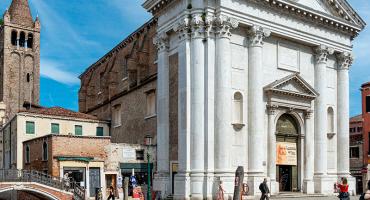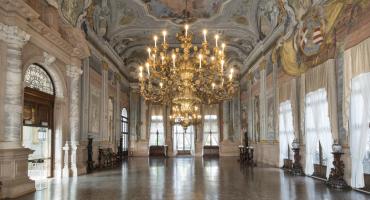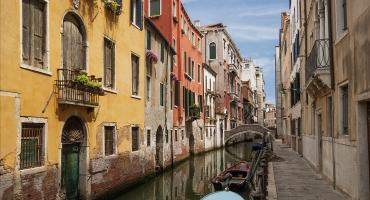On the Rio di S. Barnaba stands the Ponte dei Pugni, a bridge of particular importance in the tradition of Venetian festivals. Both its name and the white stone footprints on the central platform serve as a reminder of a violent game, rooted in ancient traditions, based on the rivalry between the Castellani, inhabitants of one part of the city, and the Nicolotti, inhabitants of another part.
These battles generally took place from September to Christmas, during which the bridge became the stage for a spectacular contest that could last all night and gradually transformed into a furious brawl with fatalities and injuries; the fighters, falling into the water, if still alive and not too stunned, would return to the bridge to fight with even more fury than before.
It is worth noting that the bridges (like the fondamenta) used to be without railings, consisting of a few wide steps (two or three on each side) to be comfortably traversed by horses and carts, as was customary in the early centuries. A large audience would gather to watch the spectacle, crowding the fondamenta or cheering from boats anchored near the bridge. The two popular factions also clashed on other bridges in the city, some of which have retained names such as "della guerra" (of the war). In the more remote eras, the teams even confronted each other with sticks; however, in the course of the 13th century, the use of these gradually declined and was definitively prohibited only in the late 1500s, in favor of fists.
The Republic regulated and encouraged these games, considering them as military training; sometimes it promoted them, organizing them for the entertainment of visiting foreign dignitaries. It was with an 18th-century decree that the Council of Ten put an end to the battles on the bridges, replacing them with other exercises, such as regattas or human pyramids.
Joseph Heintz the Younger, Competition on the Ponte dei Pugni in Venice, 1673, Germanisches Nationalmuseum, Nuremberg.

Bibliography:
G. Lorenzetti, Feste e maschere veneziane, Venice 1937.
G. Lorenzetti, Venezia e il suo estuario, Trieste 1975.
P. Molmenti, La storia di Venezia nella vita privata, 3 vols., Trieste 1981.
G. Piamonte, Venezia vista dall'acqua, Venice 1977.
B. Tamassia Mazzarotto, Le feste veneziane, Florence 1961.
G. Tassini, Curiosità veneziane, Venice 1964.



